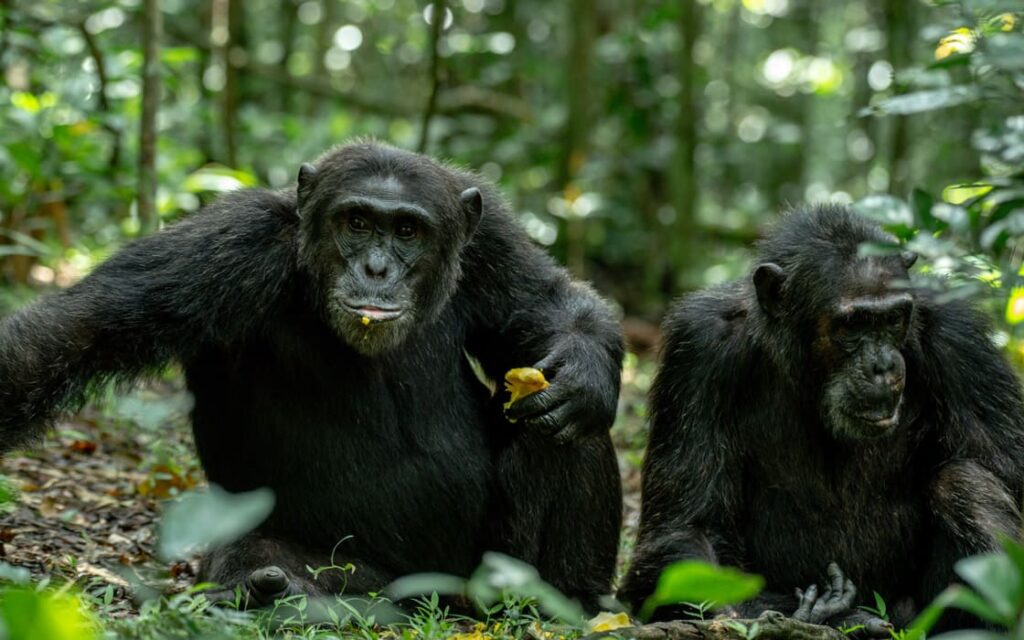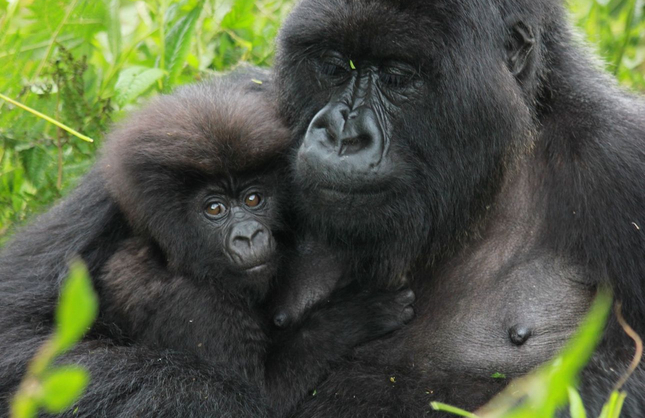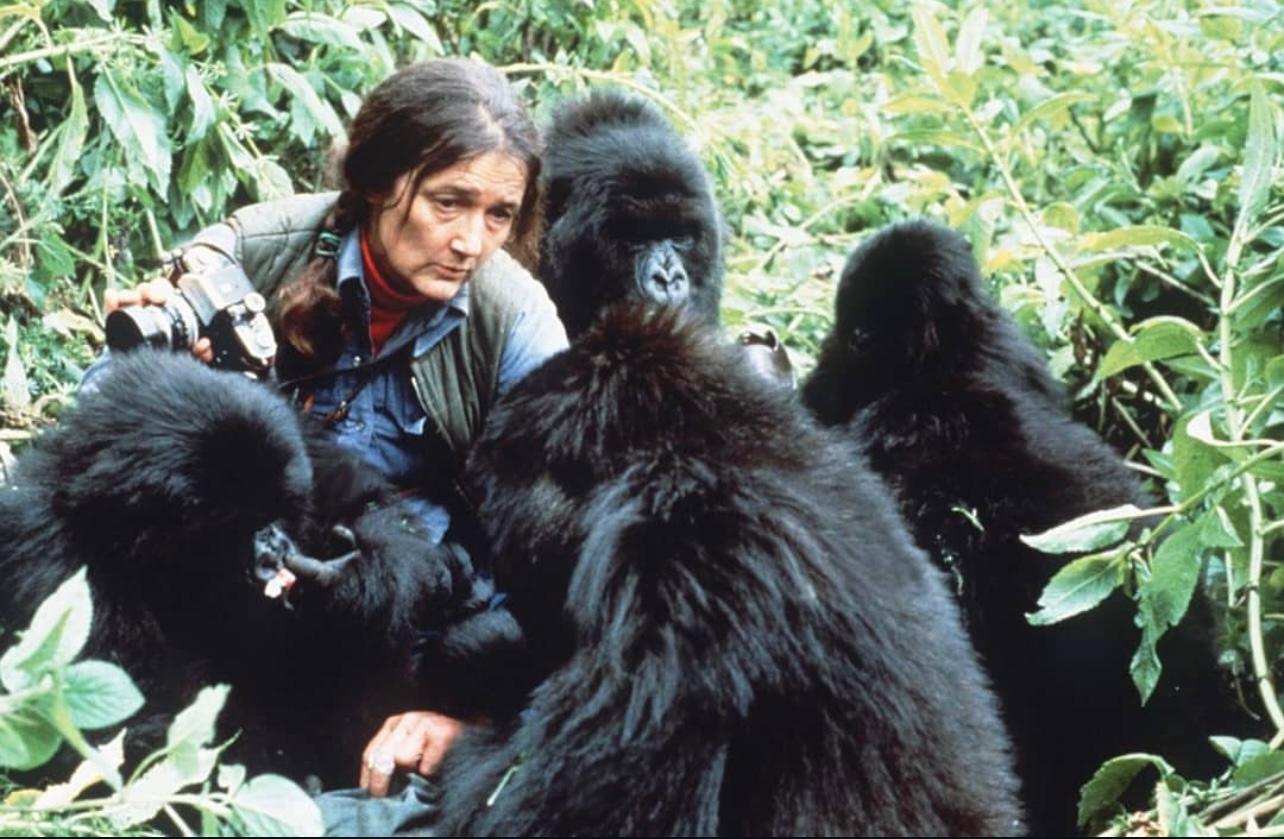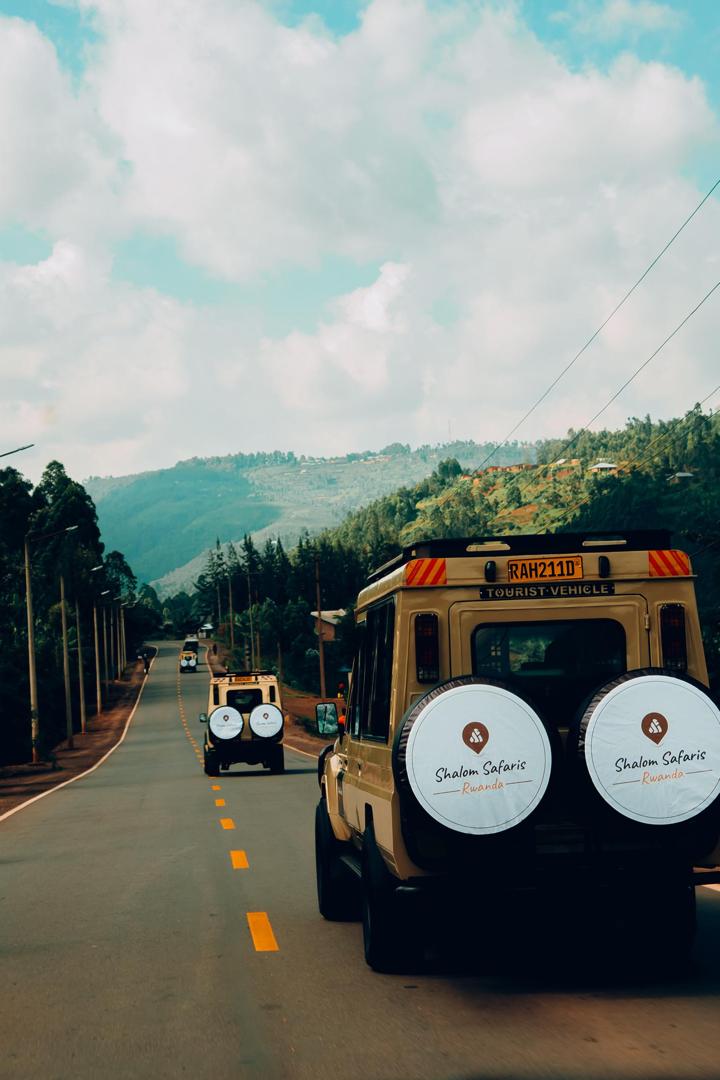Welcome to Kibale National Park
Kibale National Park is a national park in Western Uganda, protecting moist evergreen rain forest. It is 766 square kilometres in size and is located between 1,100 metres to 1,600 metres in elevation. Despite encompassing primarily moist evergreen forest, it contains a diverse array of landscapes.
Interesting tourist’s attractions in Kibale Forest National Park Uganda
- Primate Species
Famous for her population of primate species totaling to thirteen (13) in numbers, Kibale is surely a place any tourist will want to visit to listen to the charming sounds produced by the primates in this life-filled ecosystem. The most visited part of Kibale National Park for primate walks is Kanyanchu but tourists can also walk to Sebitoli Forest to see some primates there too. Some of the primates which can be seen include the black and white colobus monkeys, grey cheeked Mangabey, blue monkeys, red tailed monkeys, the vulnerable red colobus monkey, the vervet monkeys and the olive baboons. Some other primates are better seen in the night walks for example the Pottos and bush babies with the help of bright flashlights.
- Other wildlife species
Although many of the ground dwelling mammals are uncommonly seen, Kibale National park still offers the opportunity for tourists to encounter some big and small mammals which are found in the other National Parks. These mammal species include the 500 elephants, the golden cats, leopards; lions on a few occasions can also be seen migrating from Queen Elizabeth National Park, Serval cat, buffalos, bus pigs, Harvey’s and Peter’s duikers, African Palm Civet, the Marsh mongooses and the Alexander’s Cusimanse. Other mammals can be seen around the park’s swamps for example the Sitatunga near Bigodi wetland sanctuary and the swamp otter. Some lucky tourists also have the opportunity to see a number of reptiles and amphibians during the walks throughout the national Park.
- Bird and Butterfly Species
Kibale National Park has an attractive bird list with up to 375 colourful species of birds including the Blue-breasted Kingfisher, Yellow-rumped Tinkerbird, Brown-chested Alethe, White-naped Pigeon, Black Bee-eater, Nahans francolin, Red-chested Owlet, Red-faced Woodland Warbler, , Little Greenbul, Scaly-breasted Illadopsis , Black-eared Ground Thrush, Little Green Bul, Brown Illadopsis, White-tailed Ant-thrush, Green-breasted Pitta, African Pitta, Black-capped Apalis, Yellow Spotted Nicator, Purple-breasted Sunbird, Western Nicator, White-naped Pigeon and the African Grey Parrot. Visitors also have the opportunity to see 250 colorful butterfly species.
- Floral Species
In the past the park lost a great number of its tree species due to the logging that was going on in the area. A number of efforts have however seen the numbers of trees in the park beginning to regain numbers that had reduced in the past. Some of the species which were lost have been replanted whereas other exotic tree species like the eucalyptus and the pine trees have been planted in order to prevent the forest from dying out. The park’s area today has up to 250 tree species, with the park’s largest area being covered in moist evergreen and semi-deciduous forest. These many species have for long attracted researchers from different parts of the country and other parts of the world to carryout studies of such a unique forest community.
- Ndali – Kasenda crater lakes.
In the Kasenda, Rweetera, Rwaihamba, and Kabata areas about 30km south of Fort Portal lie the beautiful Ndali Kasenda crater lakes. These lakes were formed about 10,000 years ago and they include sixty (60) stable and seasonal freshwater lakes. The lakes are indeed beautiful and are appalling to the human eye offering views of the thick-green vegetation, beautiful butterflies, jolly monkeys, the Rwenzori ranges, the melodic bird species and panoramic views of Kabarole’s tea estates. While at this point tourists can also see the southern rift valley plains and Lake George. Adding to their beauty, the lakes at Kasenda have a magical story attached to them. It is believed that they were formed by the Chwezi ruler called Ndahura who fled from his kingdom after his son (Wamala) had taken his throne from him.
- Chimpanzee tracking/trekking and habituation
Kibale National Park has 1450 chimpanzees which tourists are assured to see whenever they visit Kibale National Park. Chimpanzee tracking sets off at 8 am and another at 2:00pm and takes an average duration of three (3) hours. Tourists who get up earlier also stand the chance to watch the chimps between 6:00am and 6:30am as they breastfeed their young ones, feeding, copulating, hunting, patrolling copulating, resting and exhibiting, to the time they build their new nests at 7:00pm. Interested tourists can also take part in the full-day Chimpanzee Habituation Experience (CHEX) but this requires making timely bookings. Tourists will then be assigned a chimp community which is undergoing habituation and this is a very satisfying experience.
- Birding in Kibale National Park
With the abundance of bird species, tourists can successfully enjoy a Uganda Birding Safari. The Birding tour commences at 7:00 am at Kanyanchu.
Birding tours can also lead to a place called Bigodi Wetland Sanctuary, located just outside the park. This wetland sanctuary has up to 138 bird species which may be seen during guided walks along the boardwalk trail and viewing platforms. These include the Yellow-spotted Barbet, Hairy-breasted Barbet, Black Bishop, White-breasted Negrofinch Western Nicator and the Grey-winged Robin-chat.
- Nature walks and hiking in Kibale National Park
Adding to the daily nature walks, tourists on a night nature walk stand a greater chance of seeing some nocturnal species after many of the primates and other day residents leave to get some rest. The night walk normally starts at 7:30pm and returns to the camp1 – 2 hours later .Armed with powerful torches, tourists may see rarely seen creatures such as the bush baby, potto, nightjar, cricket and tree chilling hyrax.as well as the occasional civet or serval cat.
- Cultural encounters
Tourists can make excursions to the local people who surround Kibale National Park, principally the Batooro and Bakiga. Tourists can expect to be served to traditional arts of these people like traditional healing, local African crafts, music and dance, and to interact with these interesting groups of people. Today they have grouped themselves under the umbrella called Kibale Association for Rural Environment Development (KAFRED). Through this eco-tourism arrangement, the locals have benefitted from tourism activities which have a direct and indirect impact on their livelihoods.
- Children’s Activities
Uganda Wildlife Authority (UWA) only allows children above twelve (12) years to participate in the forest walks with the rest of the adults. The park however provides educational programs for children below 12 years including forest walks and pond dipping which are all done under the guidance of well-trained ranger guides. The safety of your child is something you don’t have to worry about and you can enjoy your primate tracking knowing that your children are positively occupied.
Kibale Forest National Park Uganda – Chimpanzee Tracking Safari
Kibale National park is more popular for its population of primate species especially the 1450 habituated chimpanzees and the L’Hoest’s monkey that reside in the park’s habitats making it a top destination for primate safaris in Uganda. Although the park has the tagline, “Primates’ Planet” it is not only limited to primate species only but offers visitors sightings of sixty (60) other mammal species including lions which migrate from Queen Elizabeth, leopards, buffalos, warthogs, forest elephants, bushpigs, blue and red duikers and the mongooses. The park’s habitats are a refuge to over 375 bird species including the Western Nicator, Yellow-rumped Tinkerbird, Red-chested Owlet, African grey parrot, and the Blue-headed Sunbird. Adding to the many stunning biome species in the park, Kibale National Park also has a varied diversity of landscapes which are something to marvel at.







